Caring for America’s Family Treasures: The Classic Firearm Preservation Guide
By Turnbull Restoration
Download Our Quick Reference Card
Or, do you prefer to have our quick reference card mailed to you? Click here to request your hardcopy.
Important note: This article is intended for informational purposes only. Turnbull Restoration accepts no liability for the use or misuse of this information. Do not attempt any of the processes described unless you have the necessary knowledge and skills. When in doubt, always seek the help of a qualified, expert gunsmith
We see it often. You’ve come into possession of an old rifle, handgun or shotgun, and it’s now sitting idly in your safe. Perhaps it was passed down to you by a relative. Perhaps you or a family member were active in hunting or shooting sports years ago. This is a common occurrence, so if this is you, you’re not alone. These relics originally made by Winchester, Parker, Marlin, Colt, L.C. Smith and other iconic builders are America’s treasures. And now you are the steward of one or more of these legends, along with all the stories and memories attached to them. American classic firearms deserve to be cared for by the next generation so we never forget the future our ancestors built for us.
It’s your turn.
Antique and vintage firearms hold a special place in the hearts of owners and stewards, collectors and enthusiasts alike. These legendary long guns and handguns not only have significant sentimental value but also require proper care and maintenance to preserve their authenticity and functionality. In this guide, we’ll explore the essential steps for preserving classic firearms and keeping them in the best possible condition – one that pays respect to their beloved history.
In this Classic Firearm Preservation Guide, we will discuss:
But before thinking about firearm preservation, here are some very important questions for you to think about:
Caring for Antique and Heirloom Firearms
When Should They Be Left Alone?
If you own a firearm that belonged to a loved one, it’s bound to hold a special place in your heart. You might already be considering saving, or even restoring it. But if you own a firearm with a special meaning, or one that was owned by a famous person in the past, it could have a lot of value for a professional collector. If you try to work on those firearms, even with good intentions, you could end up ruining their market value.
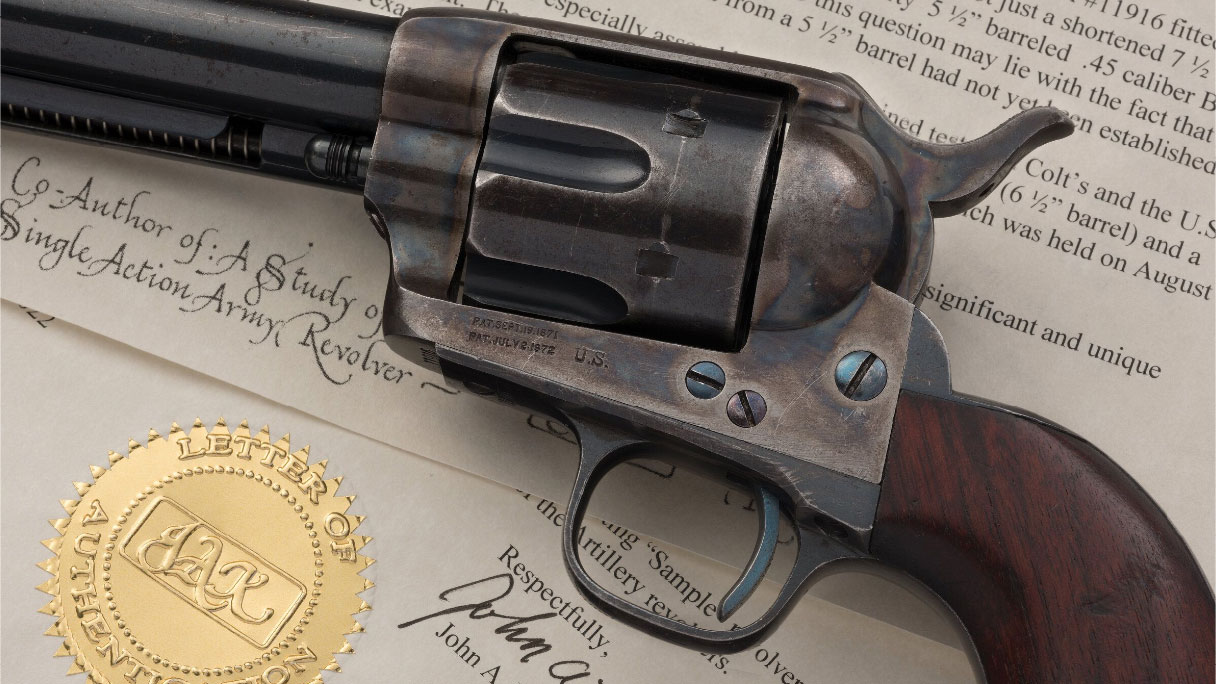
Rare, documented, and historic Colt Single Action Army Revolver. Image courtesy of Rock Island Auction Company.
Do your homework to find out if that’s the case for you. If it is, you’ll need to think of your possessions not as firearms that can be used and cared for in the normal way, but as historical artifacts that need to be handled with extreme care to preserve their history and value. If you’re not sure what you’re dealing with, speak to a qualified appraiser or knowledgeable historian before you begin.
Safe to Proceed? Great, Let’s Get Started.
From this point on, our guide assumes you’ve done your research and have decided you’re ready to work on your beloved firearm. Our guide will show you how to take care of it and when to keep using it, so you can make memories that will last a lifetime.
|| Back to table of contents. || Finding our article helpful? Enter your email address to receive updates. ||


Recovery
Caring for America’s cherished firearms starts here.
You’ve inherited a family legacy that wasn’t properly stored. Or, you already own a vintage firearm that’s been sitting unused for years. Let’s say the remains of the old case or holster that the firearm was stored in are now sticking to your heirloom. It’s in a messy condition, you know it’s up to you to fix it, and you’ve done your homework. So what do you do now?
We call this step “Recovery”. This could mean stalling the natural progression of age and decay so you can enjoy the firearm again, getting it in a condition where it can then be conserved, or deciding to fully restore the family heirloom.
First, examine the wood and metal parts. Can they be cleaned? They may need to be treated in different ways. If you can carefully disassemble the firearm without damaging any of its components, consider taking it apart.
Wood Cleaning
Begin by mixing a small amount of water with a few drops of mild detergent. Dampen a soft cloth with your mixture and lightly clean the outside wood surfaces. Use a clean cloth dampened with plain water to rinse. Repeat this step with mineral spirits (oil-based soaps should not be used). Once dry, you can gently wipe the end grain with a non-building oil like mineral oil in order to moisturize the wood. Boiled linseed oil could be used to refresh surfaces, but be sure to wipe off any residue thoroughly after 5-10 minutes.

Metal Cleaning
Before you begin working on the metal surfaces of your firearm, you’ll need to identify what finish it has, or had, if the finish has completely worn away. Most heirloom, vintage, or antique firearms will be blued or plated carbon steel; stainless steel wasn’t commonly used to manufacture firearms until the 1960s. Similarly, modern coatings (Cerakote, DLC, ArmorTuff, etc.), aluminum, and polymer frames and parts weren’t used until the 1940s or later. If you’re unable to determine the finish on your firearm by looking at it we recommend determining the manufacture date and doing some research as to what finish the manufacturer would have been using in that year. You can also request a factory letter from some companies, such as Colt, Winchester, and Marlin, which may tell you exactly what finish it shipped with originally. The Cody Firearms Records Office at the Buffalo Bill Center of the West is a great place to start.
To remove surface corrosion on blued metal parts, begin by rubbing the surface gently with a non-abrasive, general-use gun oil like G96, Rem Oil or Hoppes #9. Some may use a penetrating oil instead, but working tight crevices and removing rust-bonded metal parts tend to be the main application for this product. With careful scraping motions, most corrosion will be removed from the surface with little to no damage to the underlying finish. Soft bronze alloys are best for scraping, for example, a penny coin that was minted before 1980. Fine-grade bronze wool works as well. Older plated surfaces tend to flake away if cleaned aggressively, so please be extra careful if this is your situation.
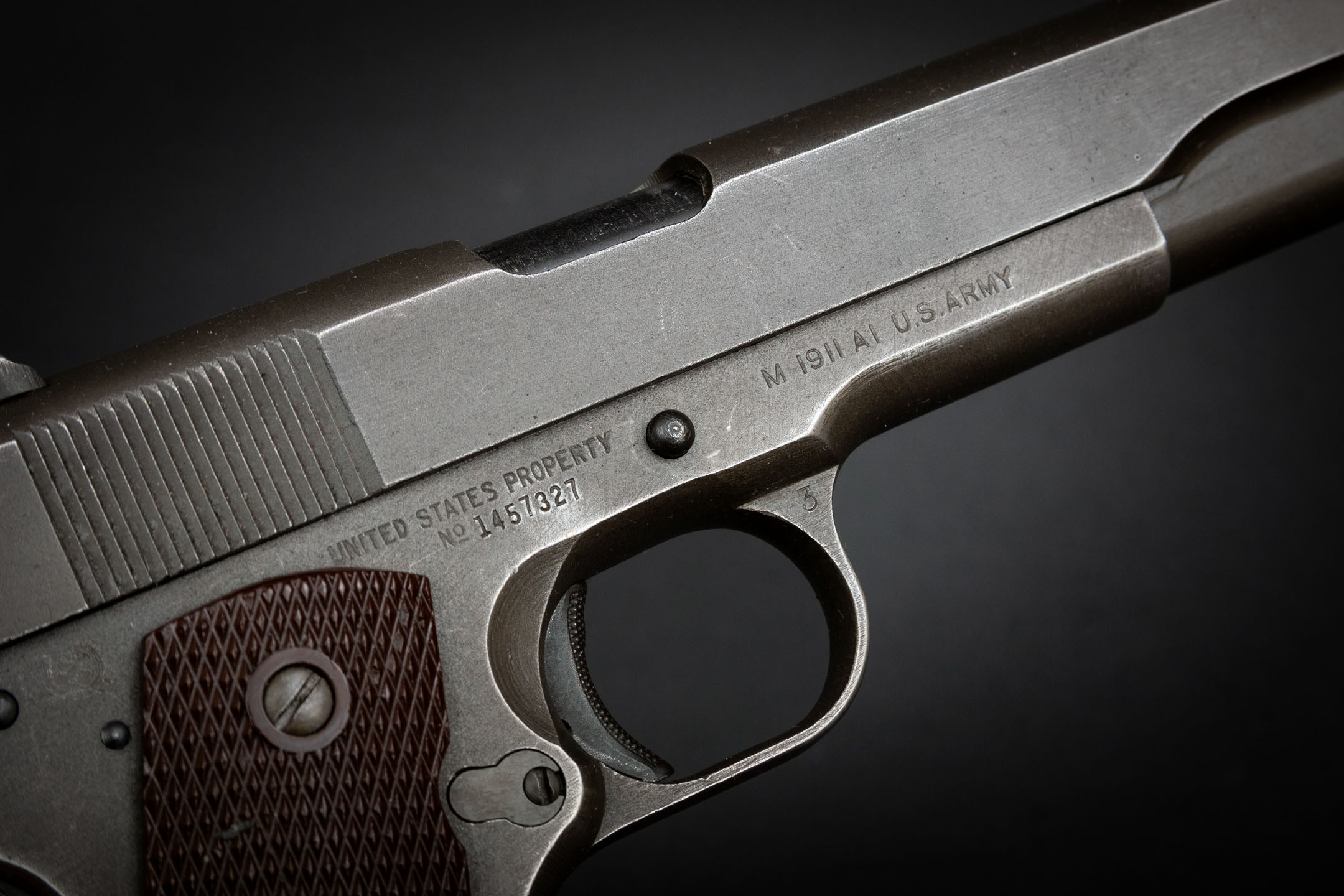
Firearms have a lot of holes and crevices that can be tricky to get into. For this, use pointed probes or cotton swabs dipped in a solvent. Birchwood Casey Gun Scrubber works well for this, while always being sure to carefully read the directions. It’s very important to be extra careful with screws on old firearms. Always make sure you have the correct screwdriver and bit. Magna-Tip bits by Brownells are highly-regarded, and worth your time to research. Gunsmithing companies sell extensive screwdriver sets, if you find you don’t have the correct type or size at home. Before using a screwdriver to loosen the screws, use plastic or soft metal picks to get rid of any dirt that’s stuck on the screw heads. Once the heads are clean, you can usually get screws unstuck just by applying some heat and cold.
Use a bronze brush or toothbrush to clean out your bore. Barrels with heavy surface corrosion may require multiple rounds of cleaning. It’s important to know that many rust removers and heavy-duty cleaners can’t tell the difference between rust and metal, and could actually cause pitting.
Always read your chosen product’s directions for proper usage. Study their formulations and understand any abrasive properties they may have. And always consult a professional when in doubt.
When you’re satisfied with recovery, it’s time to make a choice as steward of your heirloom firearm.
|| Back to table of contents. || Finding our article helpful? Enter your email address to receive updates. ||
Use, Conserve or Restore?
Use
Making all-new memories with your cherished firearm
From this point on, our guide assumes that you’ve done your research and decided that you’re going to keep using and enjoying your vintage firearms. Cleaning, storing and handling them properly will keep your treasures in good shooting condition and looking great for many years to come. Skip ahead to get started.
Conserve
Safely “freezing” your antique’s condition for long-term storage
If you’ve done your research, you’ve probably come across a lot of good reasons to not bring your beloved shooting iron back into action. You’ve probably decided that the best way to care for your family treasure is to prepare it for long-term storage. Conserving an antique or vintage firearm that’s never going to be shot again is outside the scope of this guide, but there are some great resources out there that you can check out. We suggest starting with this helpful article written by NRA Museums, a branch of the National Rifle Association, and then building your search from there.
Restore
Returning your family treasure to its original factory condition
Your research may have turned up one other option: Restoration. It’s true that in some cases, highly-specialized gunsmiths and artisans can get an antique or vintage firearm back to the way it was originally made. But when it comes to firearm restoration, there are a lot of things to think about, including pros and cons. And there are only a few true firearm restorers in the world. We happen to be one of them. Turnbull Restoration Co. revolutionized and legitimized the field of antique firearm restoration over 40 years ago. Check out our additional resources below for more info.
|| Back to table of contents. || Finding our article helpful? Enter your email address to receive updates. ||
Cleaning Your Classic Firearm
You’ve chosen to take care of your family treasure, not just by keeping it safe but by continuing to use it, which adds to its history and its storytelling powers. We think safekeeping and proper usage is – where applicable – a great way to honor our shared history as well.
Proper cleaning is crucial for protecting vintage and heirloom firearms in use. However, it’s essential to approach the cleaning process with caution to avoid damaging the delicate finishes and materials. Here are some tips for cleaning your classic firearms.
Key Takeaways:
- Use quality over-the-counter gun oil for wood and metal cleaning
- Do not use solvents, aggressive degreasers or abrasives on the outside of the firearm
- Apply a thin layer of oil after cleaning to protect the finish from moisture and oxidation
- Long-term conservation and storage requires a different approach
On any full wood and metal restoration that we have completed for you, we recommend that the firearm be cleaned and oiled (both inside and out) with quality over-the-counter gun oil such as G-96 Gun Treatment or Remington Rem Oil. These oils are purely petroleum-based and do not contain any solvents that will damage or harm the wood or metal finishes. Likewise, quality gun grease should be used on any parts that are close tolerance or have the potential for high friction (e.g., double gun hinge pins, forend irons and takedown rifle collars).
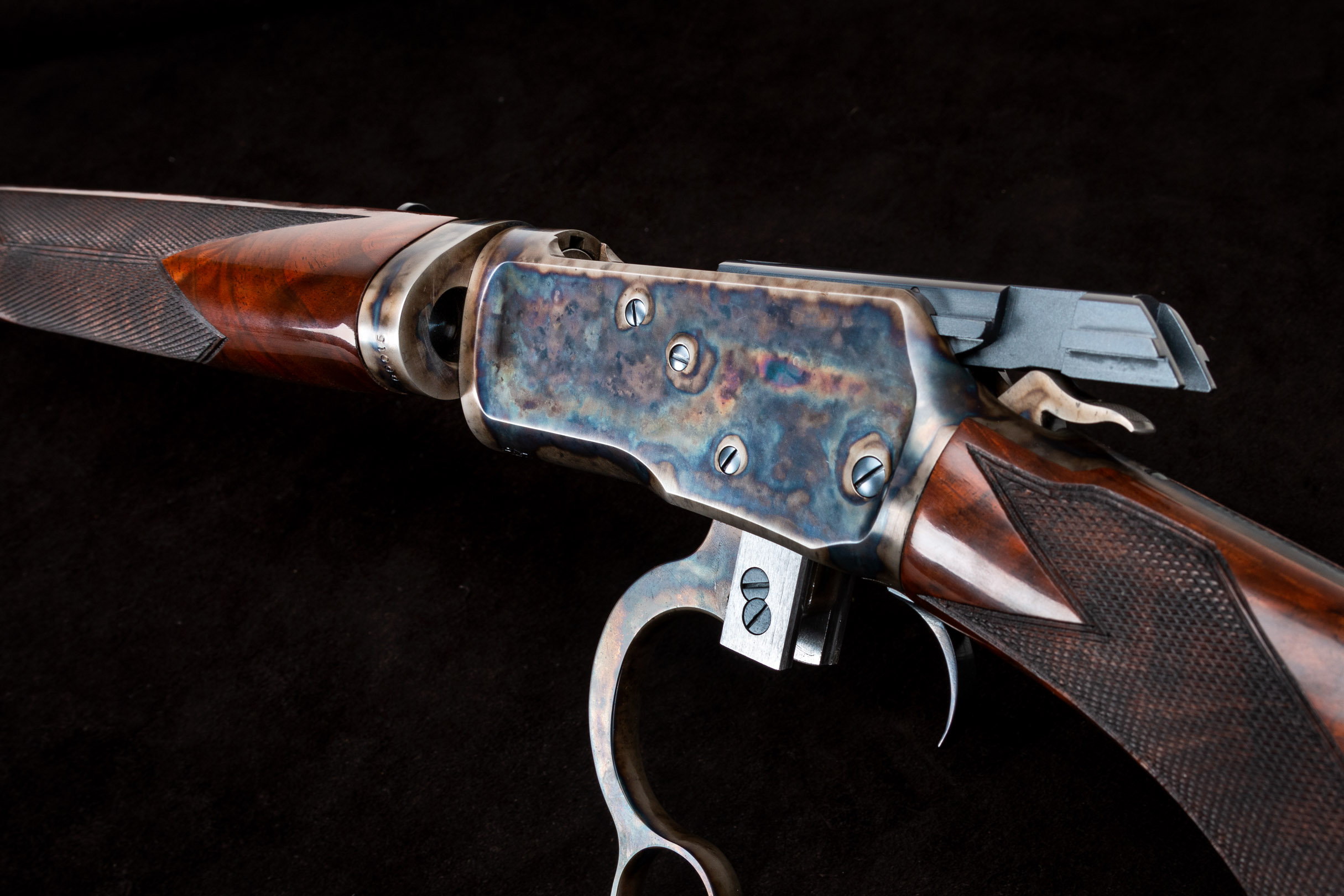
Do not use any solvents, aggressive degreasers or abrasives on the outside of the firearm. Many commercial firearm cleaning products contain solvents that will dissolve lead and/or copper. These solvents will instantly damage your stock finish, as well as the protective layer of varnish or lacquer that’s applied to our color case hardened parts. It’s important to take precautions and protect the exterior of the firearm if you are using these cleaners.
When cleaning and protecting your classic firearms, experts recommend wearing nitrile examination gloves. When handling your heirlooms while in storage, we recommend using white cotton gloves.
Some vintage firearms will still show some of their original metal finishes. When new, these brilliant finishes on classic shooting irons were often their signature. Here are a few notes for their proper care:
Color Case Hardened Parts
The colors on your classic’s case hardened parts were a by-product of the metal hardening process. These colors were known to be somewhat fragile and wore and faded over time from normal handling and usage. Now, as then, care should be taken to minimize exposure to sunlight for extended periods of time. But know that the hardness obtained by the steel during the coloring process will not be affected even if the colors begin to fade or wear off.
Charcoal, Rust, and Hot Blued Parts
Traditional charcoal blue and rust blue finishes are very tough and durable. These finishes should be cleaned and oiled just like any other blued part. Remember, cleaning should be done using only non-abrasive materials and mild solvents to remove any dirt, debris, or fingerprints that may accumulate on the surface.
Nitre Blued Parts
Like color case hardening, the nitre blue color is the result of the heat phase and tempering process. Nitre bluing is the most fragile, and will wear and fade the quickest of all the finishes.
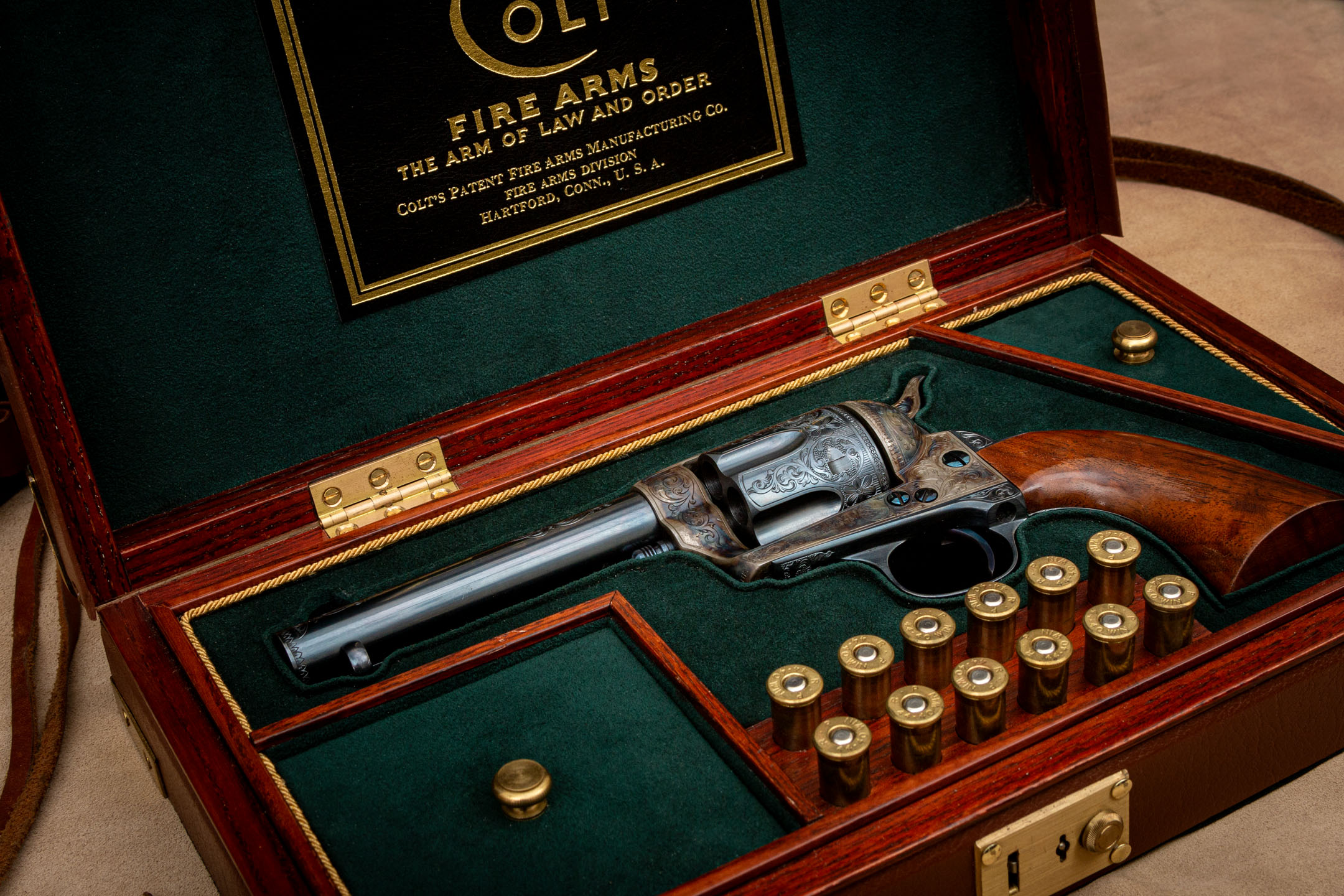
After cleaning, applying a thin layer of oil is crucial to protect the finish from moisture and oxidation. This can be done using a high-quality gun oil or any other suitable lubricant. The oil helps to create a barrier that prevents moisture from reaching the metal surface, thereby reducing the risk of rust formation. Again, this all assumes that you’re using your classic firearm with some regularity. Long-term conservation and storage requires a different approach, and we suggest starting with this helpful article written by NRA Museums, a branch of the National Rifle Association.
|| Back to table of contents. || Finding our article helpful? Enter your email address to receive updates. ||
Classic Firearm Storage
As a good steward of America’s family treasures, you’ll want to think carefully about where they’ll be stored. A well-constructed gun safe or vault will not only keep your heirlooms safe from unwanted access, but it’ll also help them live longer.

That’s because good gun safes and gun vaults are humidity-controlled, meaning there’s plenty of air circulating throughout. Humidity is unavoidable, even in the driest parts of the country. In fact, a proper gun storage space may be the only place in your home that prevents rust and corrosion.
Key Takeaways:
- Temperature should stay around 70 degrees Fahrenheit to prevent wood expansion and contraction
- A 50% relative humidity value is suitable for both wood and metal parts on heirloom firearms
- Installing an in-safe humidifier is necessary to prevent rust, corrosion, mildew, and mold
- Consider installing a humidity/temperature monitor inside safes or vaults
- Consistency is key when it comes to humidity in gun storage space
Temperature
First, make sure the temperature is right. You want to make sure your collection stays around 70 degrees Fahrenheit all year round. If the temperature changes too much, the wood will expand and contract. Fortunately, wood is naturally flexible. But if there’s too much expansion and contraction, it can cause permanent cracks. This not only looks bad, but it’s also dangerous.
Humidity
Experts agree that a 50% relative humidity (RH) value is suitable for both wood and metal parts on your heirloom firearms. Too high a RH value and metal parts will corrode. Too low a RH value and stocks will start to crack. Like with temperature, consistency is key when it comes to humidity in your gun storage space.
Most areas of North America have above 50% relative humidity, and many indoor spaces aren’t properly air conditioned. Installing an in-safe humidifier is more than just a good idea, it’s a necessity. A humidifier will keep your classic firearms from rust, corrosion, mildew and mold. Such a device will also help keep the air circulating, which is critical for rust-free firearms.
While you’re at it, consider installing a humidity/temperature monitor inside your safes or vaults. There are plenty of affordable digital models available, so you can add peace of mind knowing your family heirlooms are stored in the right environment.
|| Back to table of contents. || Finding our article helpful? Enter your email address to receive updates. ||
Handling & Displaying Your Vintage Firearms
When you’re in the field or out on the range creating new memories with your beloved rifles, shotguns, and handguns, you’re already taking steps to make sure you’re using them safely and avoiding damage. But what happens during those seasons when you’re not using them for a while? You’ll still want to enjoy them at home, share them with friends and family, reminisce, tell old stories. That’s where proper handling becomes essential.
Key Takeaways:
- When in storage/off season, avoid touching classic firearms with bare hands
- Wearing white cotton gloves provides protection as well as a way to detect rust
- Use wider and padded supports to support firearms while on display
- Choose high-quality display cases and stands that are padded with closed-cell polyethylene foam
The cleaning oils and methods mentioned above will do a great job protecting your classic firearms that are in use. But when your treasured shooting irons are in their off season, the best thing to do is not touch them. Your skin’s oils and secretions can easily corrode any blued or hardened surface. In other words, less touching equals longer lasting protection.
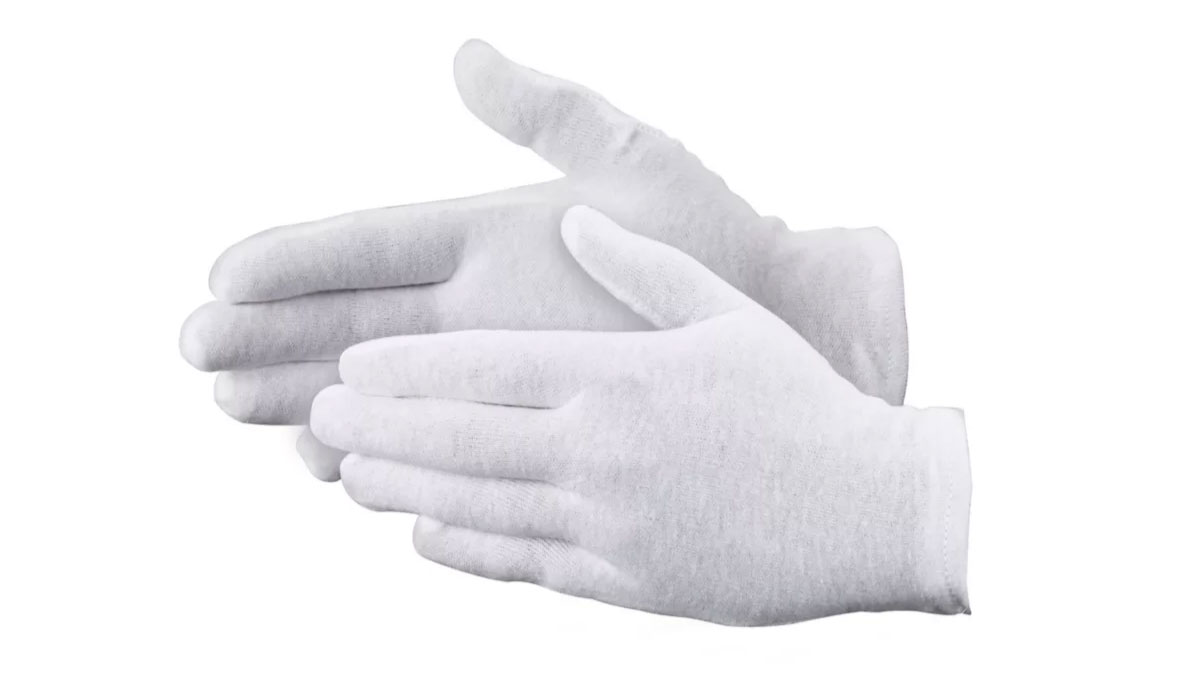
But part of the magic of preserving heirloom firearms is being able to display and enjoy them when they’re not in use, right? So, simply break out the white cotton gloves and remember to wear them. Using white cotton gloves (instead of latex, nitrile, or other gloves) will also let you know right away if your firearm is rusting – the white gloves will show you the tell-tale red particles before you’re able to spot them on the metal surfaces. And make sure you have plenty of pairs on hand – you’ll need them when you’re entertaining friends and family.
Just like when storing and transporting your classics, narrow wire hooks or loops should not support these treasures while they’re on display. For example, most long guns set on spindly support are heavy enough to cause stock indentations at the contact points. Use supports that are wider and padded instead. You’ll notice that high-quality display cases and stands are padded with closed-cell polyethylene foam.
|| Back to table of contents. || Finding our article helpful? Enter your email address to receive updates. ||
When in Doubt, Call an Expert
If you’re not sure what preservation methods to use for a particular classic firearm, it’s always best to ask a professional gunsmith or antique firearm expert. They’ll be able to advise you on how to preserve your valuable collection. This is also true if you decide to restore an heirloom back to its factory condition or decide to conserve a historical artifact.
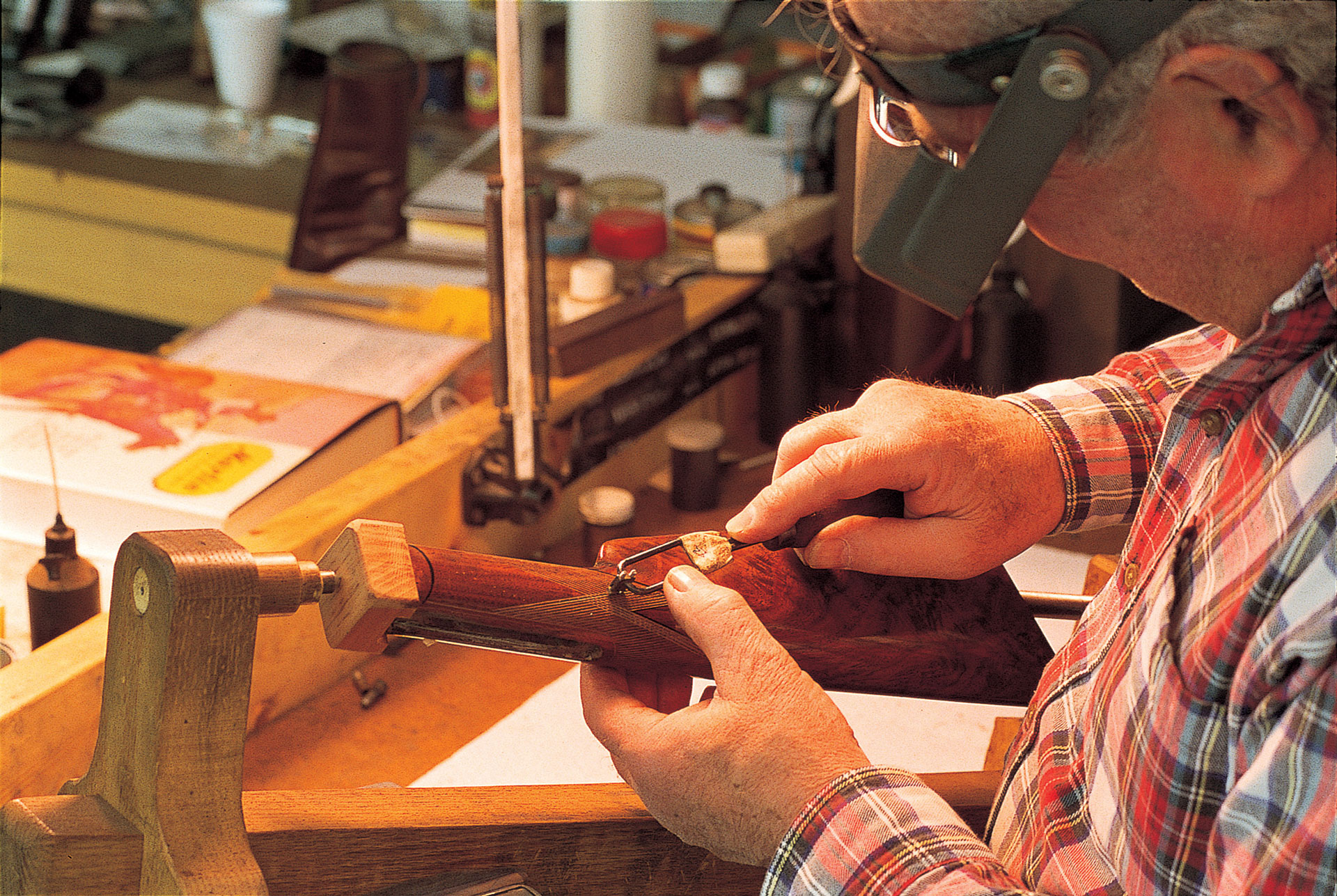
As the pioneers of period-correct antique firearm restoration, Turnbull Restoration is a great place to start searching for help. If we can’t help directly, we’re always happy to suggest resources and point you in the right direction. Above all else, we want to make sure our country’s treasures are safe, whether that means restoring them or pointing you in a direction that’s best for your situation.
|| Back to table of contents. || Finding our article helpful? Enter your email address to receive updates. ||
Other Ways You Can Help
There are other ways to preserve America’s treasures without already owning an antique or vintage firearm.
Providing Antique and Vintage Firearms a New Home
Have you considered starting a collection? By giving used old firearms a new home, you’re not only preserving their historical significance but also honoring the craftsmanship and artistry that went into creating them. These firearms deserve to be appreciated and respected, and we applaud all who are committed to protecting them for generations to come. We believe that these items should be cherished and preserved rather than discarded or forgotten.
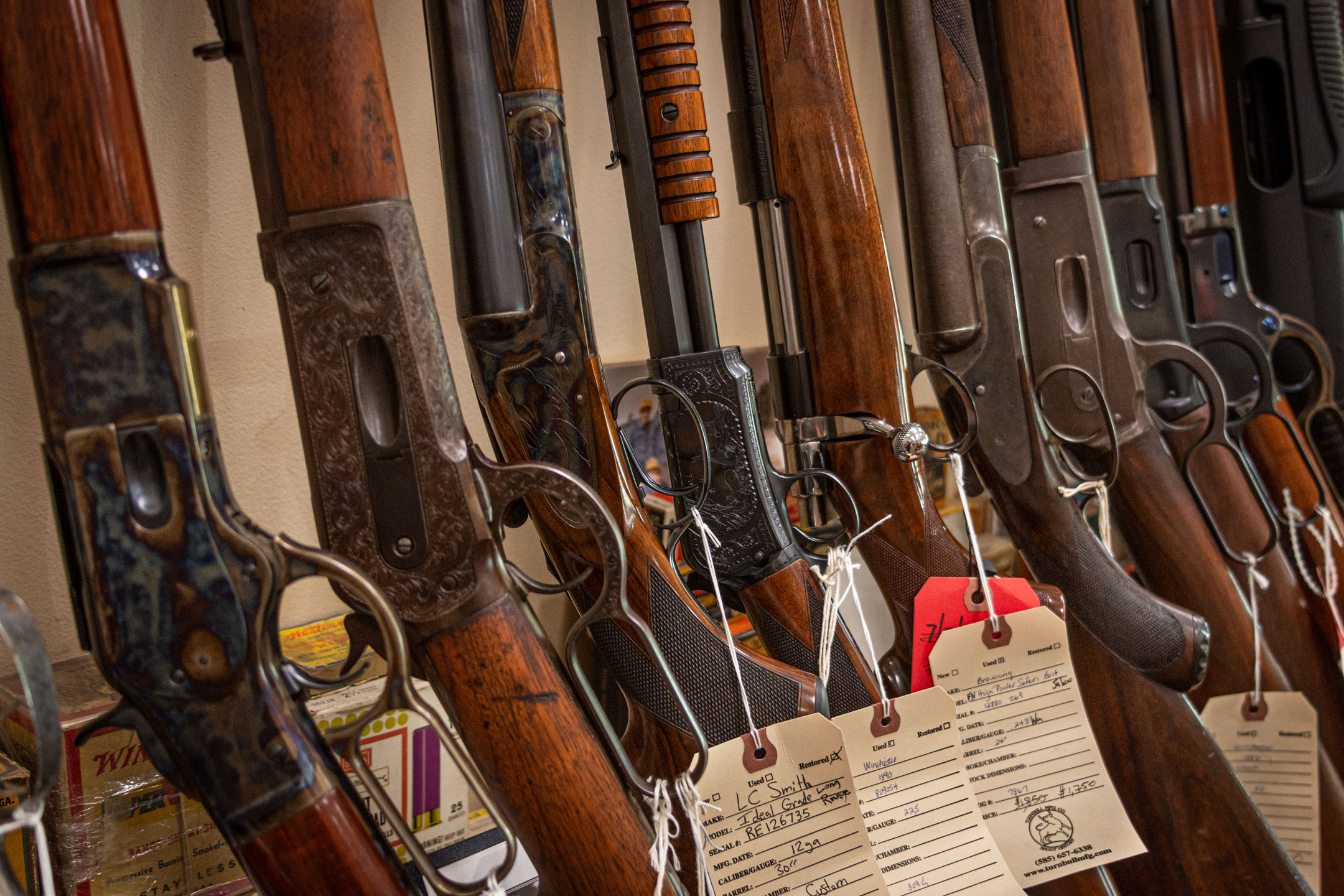
When researching additions to your collection of American classics, pay close attention to sellers who are dedicated to preserving the historical significance of their own collection. Research the firearm’s background and document its history, including any notable owners or events it may have been a part of. This information should always be shared with the new owner, adding to the firearm’s value and providing a deeper appreciation for its past.
Our own showroom lists carefully-selected examples of legendary American firearms. There are plenty in original condition, and some that we have restored to their original factory specification.
Turning New Firearms Into Modern Classics
Certain factory-new long guns and handguns become showcases for age-old gunmaking methods when transformed by skilled artisans. Especially those uniquely-qualified craftsmen who are dedicated to preserving past gunmaking methods. If you’re a collector and shooter, you may already own one of these legends in the making.
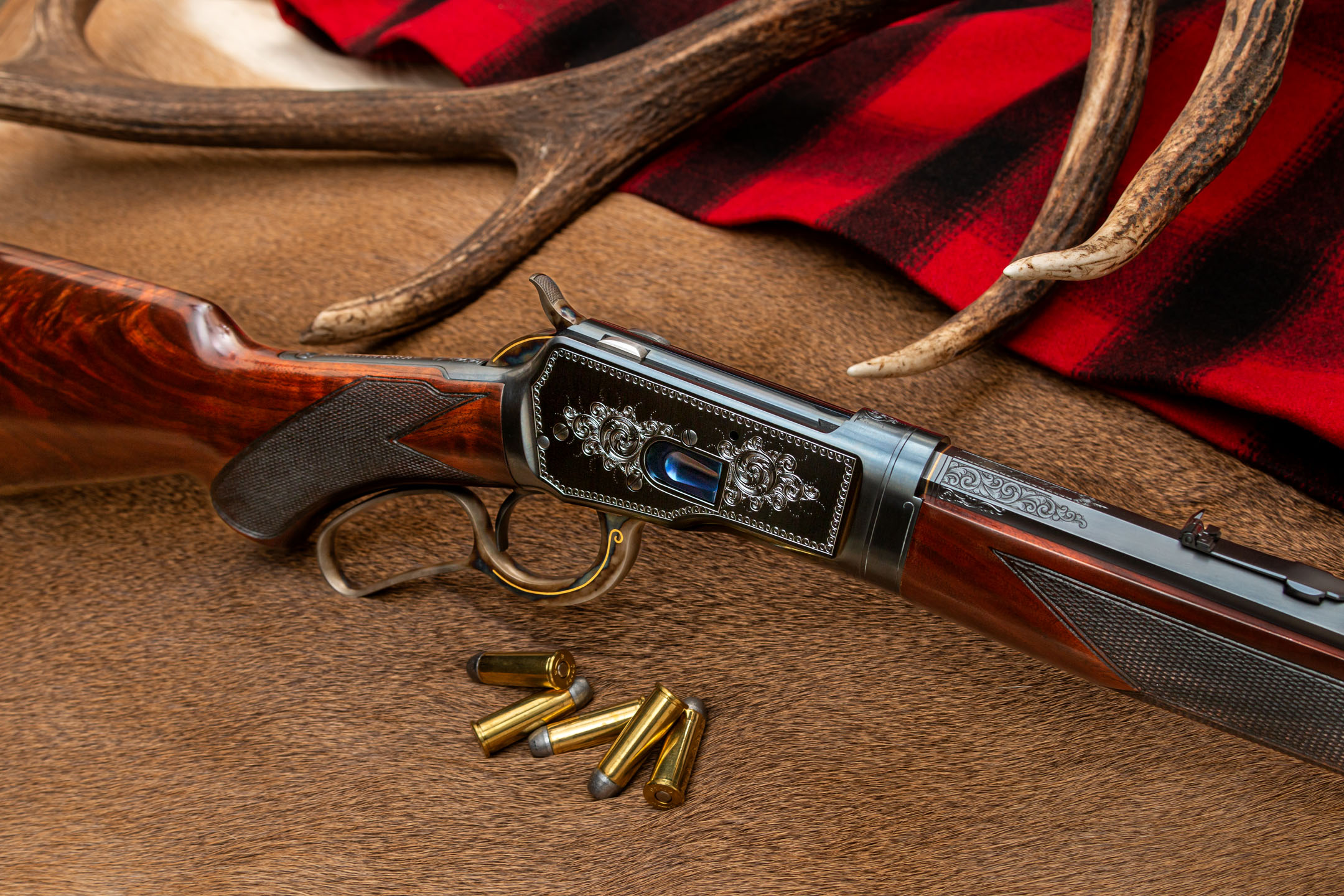
A few years ago, we started The Finish Works to give firearm owners a chance to show their appreciation for America’s gunmaking history. This “time machine” turns new firearms into conversation starters for today, and a whole new generation of keepsakes for the future.
The Finish Works’ main focus is on modern versions of the classic American lever guns and single action revolvers. If we can’t help you directly with your make and model, we’re happy to refer you to the professionals who can.
|| Back to table of contents. || Finding our article helpful? Enter your email address to receive updates. ||
Parting Thoughts
Preserving America’s firearm legacy requires a commitment to careful cleaning, proper storage, and cautious handling. By following these guidelines, you can breathe new life into the firearms your departed family members have handed down to you. Remember, preservation is not only a responsibility, but also a way to honor their rich history and significance.
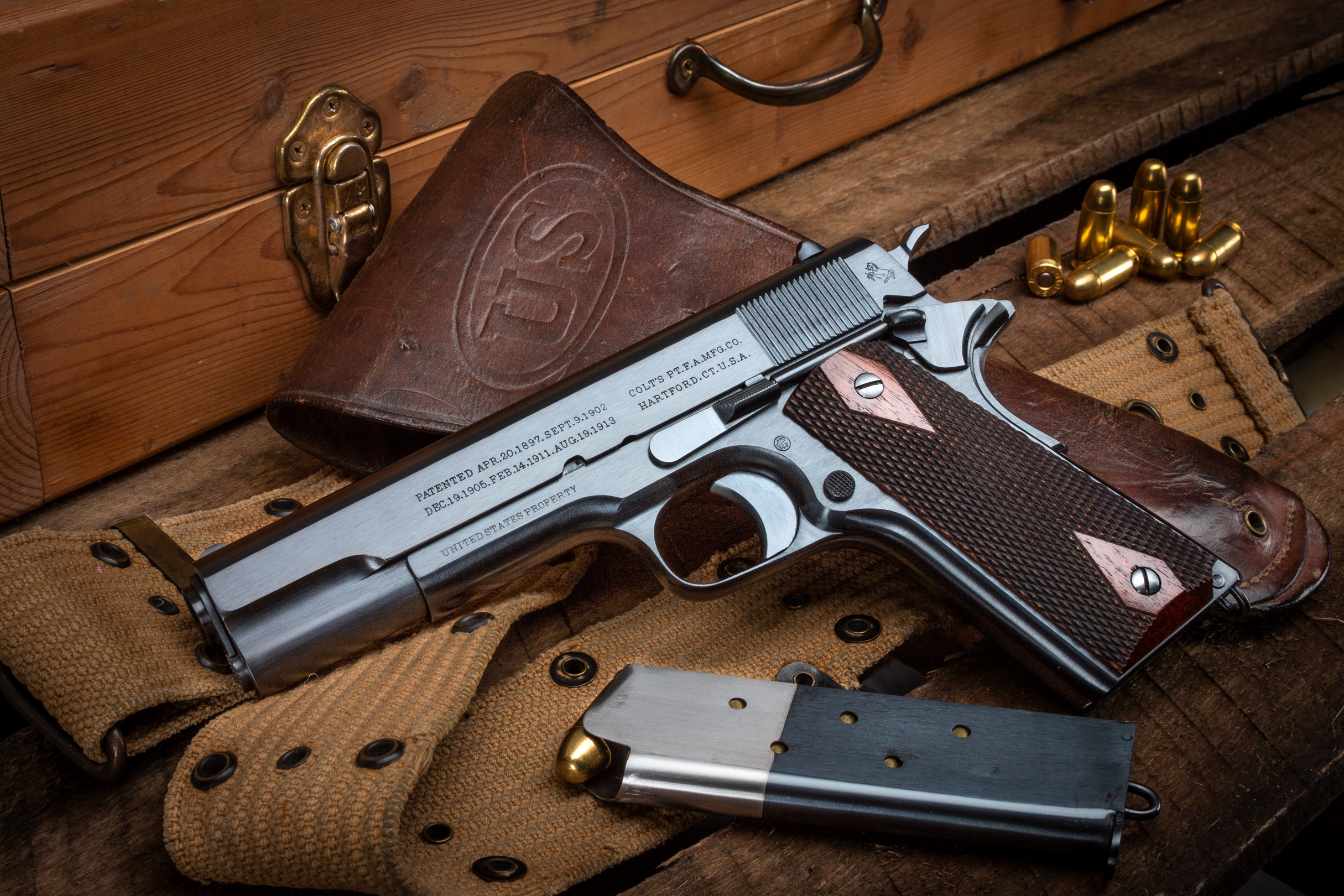
|| Back to table of contents. || Finding our article helpful? Enter your email address to receive updates. ||
Firearms History & Records
National Rifle Association (NRA) Resources
Gunsmithing Tools & Cleaning Supplies
Firearms Storage & Handling
Services & Offerings by Turnbull Restoration
|| Back to table of contents. || Finding our article helpful? Enter your email address to receive updates. ||
|| Back to table of contents. || Finding our article helpful? Enter your email address to receive updates. ||

0 Comments